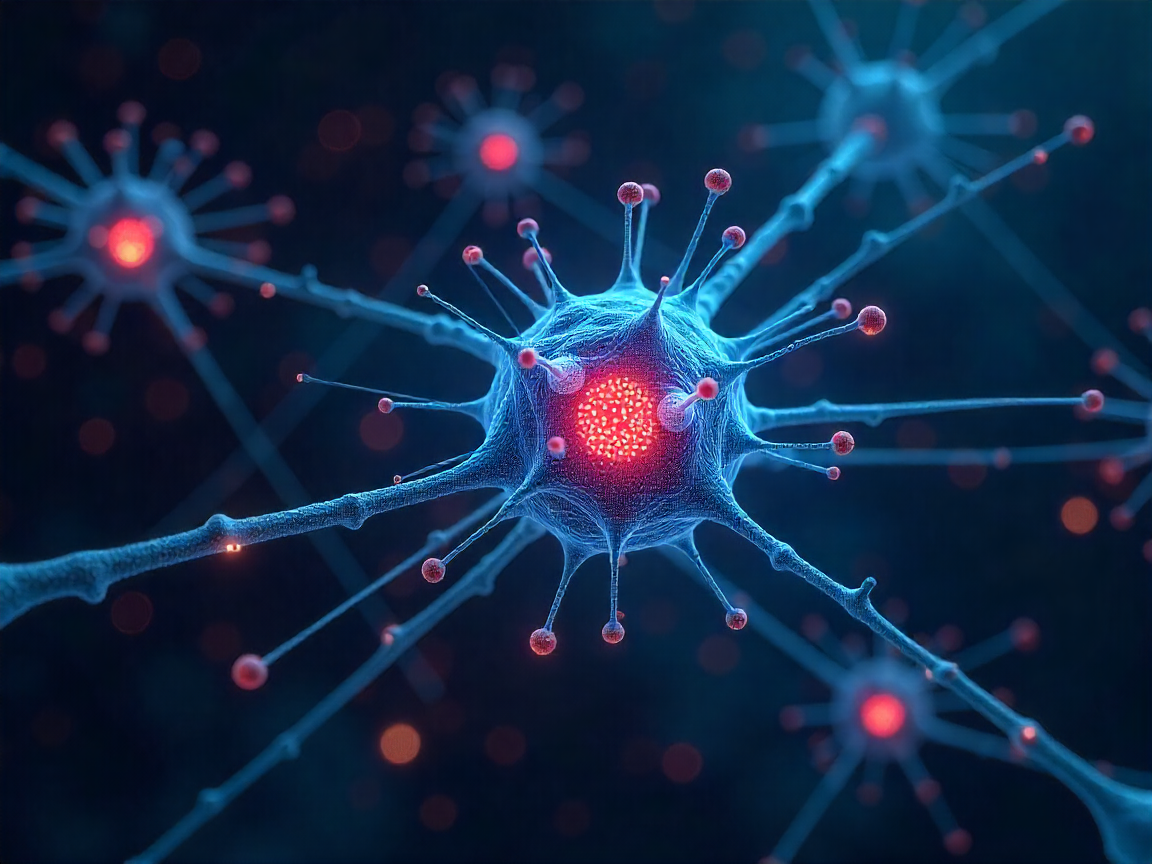Cellulogia The Study of Cellular Systems and Their Applications
In the grand tapestry of life, from the simplest single-celled organism to the complex human body, there exists a universal constant: the cell. This microscopic unit is the fundamental building block of all known life, the smallest structure that possesses all the characteristics of living things. For centuries, scientists have peered through microscopes, unraveling the mysteries contained within these tiny enclosures. This relentless pursuit of knowledge has now coalesced into an interdisciplinary field we can call Cellulogia. Derived from the root “cellulo,” pointing to cellular structures, and “logia,” meaning the study of, it represents more than just cell biology; it is the integrated science of understanding cellular structures and functions and applying that knowledge to revolutionize medicine, wellness, technology, and industry. This article delves into the depths of it, exploring its origins, core principles, vast applications, and its potential to shape our future.
The Origins and Evolution of Cellulogia
The story of it is intrinsically link to our ability to see and comprehend the infinitesimally small. Its foundations were laid not in a single moment, but over centuries of curiosity and discovery.
Historical Roots in Biology and Medicine
The journey began in the 17th century with the invention of the microscope. Pioneers like Robert Hooke and Antonie van Leeuwenhoek first described “cells” (a term Hooke coined after observing the box-like structures in cork) and “animalcules,” opening a window into a previously invisible world. However, it was in the 19th century that the true significance of the cell came into focus. Additionally, the collaborative work of scientists Matthias Schleiden, Theodor Schwann, and Rudolf Virchow culminated in the unified Cell Theory, a cornerstone of modern biology. Moreover, this theory establish three revolutionary principles: all living organisms are compose of one or more cells; the cell is the basic unit of life; and all cells arise from pre-existing cells. This paradigm shift positioned the cell as the central actor in health and disease, driving medical research to investigate the cellular underpinnings of pathology.
The Conceptual Expansion
Throughout the 20th and into the 21st century, cell biology ceased to be a siloed discipline. It began to merge with biochemistry, genetics, biophysics, and molecular biology. In addition, the discovery of DNA’s structure, the mapping of the human genome, and the ability to manipulate cellular processes blurred the lines between pure and applied science. The term “Cellulogia” emerges conceptually from this convergence. Additionally, it serves as a useful umbrella term to describe this integrated approach—a philosophy that to solve macro-scale problems, we must first understand and influence the micro-scale cellular systems at their core. It represents the evolution from simply observing cells to actively engineering solutions based on their principles.
Core Principles of Cellular Systems
To appreciate its applications of it, one must first grasp the fundamental principles that govern all cellular life. These core tenets form the language through which it interprets and interacts with the biological world.
Cellular Structure and Function
Every cell, whether a free-living bacterium or a specialized neuron in the human brain, shares common structural features that enable its survival and function. Moreover, the cell membrane, a phospholipid bilayer, acts as a selective gatekeeper, controlling the movement of substances in and out. Within this membrane, the cytoplasm houses the machinery of life. The nucleus contains the genetic blueprint (DNA) that directs cellular activity. Mitochondria, often called the powerhouses of the cell, generate energy in the form of ATP. The endoplasmic reticulum and Golgi apparatus work in concert to synthesize, fold, and transport proteins. Each organelle is a specialized department in a highly efficient corporate entity, the cell.
Cellular Communication and Signaling
Cells do not exist in isolation; they are social entities that constantly communicate. This is achieve through complex signaling pathways. Moreover, cells release signaling molecules (like hormones or cytokines) that bind to receptors on target cells, triggering a cascade of internal events. In addition, this intercellular dialogue coordinates everything from tissue repair and immune responses to embryonic development and neurological function. Understanding this “cellular language” is a primary focus of Cellulogia, as miscommunication often lies at the heart of disease.
Cellular Metabolism and Energetics
Additionally, life is an energy-dependent process. Cellular metabolism encompasses all the biochemical reactions that convert nutrients from food into usable energy (ATP). The building blocks for growth and repair. Moreover, this involves catabolic pathways that break down molecules to release energy and anabolic pathways that use energy to construct complex cellular components. It investigates how metabolic efficiency dictates cellular health, longevity, and function, and how dysregulation can lead to conditions like cancer or metabolic syndrome.
The Cellular Life Cycle
In addition, the life of a cell is a carefully regulated cycle of growth, replication, and death. The cycle involves interphase (where the cell grows and duplicates its DNA) and mitotic phase (where it divides to produce two identical daughter cells). Crucially, cells can also undergo apoptosis, or programmed cell death—a clean, controlled process essential for removing damaged or unnecessary cells. When this cycle is disrupte, such as when cells divide uncontrollably (cancer) or fail to undergo apoptosis, severe health consequences ensue. It seeks to understand these controls to develop interventions that can correct such dysregulations.
Key Application Areas of Cellulogia
The true power of it is revealed in its transformative applications. By decoding the principles of cellular life, we can develop targeted solutions across a diverse range of fields.
Medical Research and Therapeutics
This is perhaps the most profound application of it, where cellular insights are directly saving and improving lives.
Disease Mechanism
Modern medicine increasingly views disease as a cellular malfunction. Cancer is understood as a disease of uncontrolled cell division driven by genetic mutations. Additionally, neurodegenerative diseases like Alzheimer’s are characterized by the accumulation of toxic proteins and the death of specific brain cells. Moreover, infectious diseases are battles waged at the cellular level between pathogens and immune cells. Cellulogia provides the framework to dissect these mechanisms at their source.
Personalized Medicine
Moving beyond the “one-size-fits-all” model, it enables personalized medicine. By analyzing a patient’s unique cellular and genetic profile, clinicians can select drugs and therapies that are most likely to be effective and cause the fewest side effects. For example, in oncology, tumors can be genetically sequenced to identify specific mutations, allowing for targeted therapies that attack only cancer cells while sparing healthy ones.
Regenerative Medicine for Cellulogia
This cutting-edge field aims to repair or replace damaged tissues and organs. A central pillar of regenerative medicine is stem cell therapy. Stem cells, with their unique ability to differentiate into various cell types, hold the promise of treating conditions from spinal cord injuries to heart disease. Furthermore, tissue engineering combines scaffolds, cells, and biologically active molecules to fabricate functional biological substitutes, a direct application of cellular principles.
Nutrition and Wellness
The age-old adage “you are what you eat” is being redefined by it at a microscopic level. The field moves beyond basic nutrition to how specific nutrients influence cellular behavior.
Nutrigenomics
This sub-discipline studies the interaction between nutrition and the genome. It explores how the food we consume can directly influence gene expression, turning certain genes on or off. For instance, compounds in broccoli and turmeric have been shown to activate genes involved in detoxification and reducing inflammation. Additionally, showcasing a direct dietary impact on cellular defense mechanisms.
Supplement Development
Moreover, the wellness industry, guided by Cellulogia, is developing sophisticated supplements designed for cellular targeting. In addition, these include antioxidants like CoQ10 to protect mitochondria from oxidative damage, NAD+ precursors to support cellular energy and repair processes, and specialized phospholipids to maintain the integrity of cell membranes. The goal is to provide the raw materials cells need to function optimally.
Gut Health
The human gut microbiome, a vast ecosystem of trillions of bacterial cells, is now recognized as a key regulator of overall health. It investigates how these microbes communicate with our own human cells, influencing everything from immune function and metabolism to mental health. Probiotics and prebiotics are thus seen as tools to modulate this cellular community for systemic benefit.
The Cosmetic and Skincare Industry
The beauty industry has eagerly embraced it, shifting its focus from superficial coverage to fundamental cellular rejuvenation.
Cellular Aging
Additionally, skin aging is a cellular process. It involves the shortening of telomeres (protective caps on chromosomes), the decline of collagen and elastin production, and the accumulation of damage from free radicals and UV radiation. It research aims to understand and slow these intrinsic and extrinsic aging mechanisms.
Product Formulation
Modern cosmeceuticals are filled with active ingredients whose efficacy is explained by Cellulogia. Peptides are short chains of amino acids that act as signaling molecules, instructing skin cells to produce more collagen. Retinoids (Vitamin A derivatives) accelerate cellular turnover and normalize keratinization. Antioxidants like Vitamin C and Ferulic acid neutralize free radicals, protecting cellular structures from damage.
Anti-Cellulite Treatments
In addition, cellulite is a condition involving the herniation of subcutaneous fat cells through a weakened network of connective tissue beneath the skin. It-informed treatments target this structural issue. Techniques may include technologies that use heat or massage to temporarily tighten the connective tissue, topical agents designed to improve microcirculation and break down fat, or procedures that stimulate collagen to strengthen the dermal matrix.
Technology and Digital Modeling
The digital world and the cellular world are increasingly converging, creating powerful new tools for discovery and innovation.
Bioinformatics
The sheer volume of data generated by cellular and genetic research is immense. Bioinformatics uses computational tools to store, analyze, and interpret this biological data, allowing scientists to identify patterns, predict protein structures, and understand complex genetic networks that would be impossible to decipher manually.
Cellular Simulations and AI
Researchers are now building sophisticated computer models of cells and cellular processes. These in silico (computer-simulated) models can be used to simulate the progression of a disease or to predict how a new drug molecule will interact with its cellular target, drastically reducing the time and cost of drug development. Artificial Intelligence is further accelerating this by mining cellular data for novel insights.
Bioprinting
Additionally, a revolutionary application of Cellulogia and engineering, 3D bioprinting uses living cells as “bio-ink” to fabricate three-dimensional tissue structures. While still in its early stages, this technology holds the potential to print skin grafts for burn victims, cartilage for joint repair, and eventually, entire functional organs for transplantation.
Education and Public Understanding
It also serves a vital role in education and science communication. In addition, by framing complex biological concepts through the unifying lens of the cell, educators can make science more accessible and engaging for students. Understanding that our health, our responses to the environment, and the very process of aging are rooted in cellular activity empowers individuals to make more informed decisions about their lifestyle and healthcare.
Benefits and Impact of a Cellulogia Approach
Adopting a focused framework offers profound benefits that ripple across society.
- Holistic Health Insights: It connects the dots between lifestyle, environment, and cellular function, promoting a preventative and holistic approach to well-being.
- Targeted Solutions: Whether in medicine or product development, solutions born from cellular understanding are inherently more precise, effective, and efficient, minimizing collateral damage.
- Interdisciplinary Innovation: Additionally, it breaks down academic and industrial silos, fostering collaboration between biologists, computer scientists, engineers, and clinicians, leading to groundbreaking discoveries.
- Preventative Strategies: By identifying the earliest cellular markers of disease, it paves the way for interventions long before symptoms manifest, shifting the healthcare paradigm from treatment to prevention.
Challenges and Ethical Considerations
The path of Cellulogia is not without its obstacles and profound ethical questions.
Research Complexities and Cost
Cellular systems are networks of immense complexity. A single perturbation can have unpredictable, cascading effects. Furthermore, the advanced tools and long-term studies required for this research are exceptionally expensive.
Ethical Dilemmas
The power to manipulate cellular life brings great responsibility. Stem cell research, particularly involving embryonic stem cells, continues to be a subject of ethical debate. Genetic manipulation using technologies like CRISPR-Cas9 offers the potential to correct genetic diseases but also raises the specter of “designer babies” and irreversible changes to the human gene pool. The field of personalized genomics also presents challenges regarding data privacy and genetic discrimination.
Commercialization and Misinformation
In addition, the popularity of “cellular health” has led to its commercialization. This creates a risk of “science-washing,” where products make exaggerated or unsubstantiated claims about their cellular benefits, often preying on consumer hope. This underscores the critical need for scientific literacy and robust regulatory oversight to distinguish genuine innovation from marketing hype.
The Future of Cellulogia
The frontier of it is expanding at an exhilarating pace, promising a future where our mastery over cellular systems will redefine possibility.
Emerging Trends
- Advanced Gene Therapies: Moving beyond treating symptoms to curing genetic diseases at their source by correcting faulty genes within a patient’s cells.
- Synthetic Biology: The ultimate application of it, this involves designing and constructing new biological parts, devices, and systems, or re-designing existing natural biological systems for useful purposes, such as creating bacteria that produce biofuels or detect environmental toxins.
- AI Integration: The use of artificial intelligence to analyze complex cellular datasets in real-time will lead to new diagnostic tools and personalized treatment recommendations.
Potential Future Applications
- Significantly slow down or reverse key aspects of the cellular aging process.
- Receive perfectly tailored nutritional and medical regimens based on continuous cellular monitoring.
- Develop hybrid bio-digital systems, where living cells are integrated into computational devices.
Conclusion
Additionally, it is a integrated study of cellular systems and their applications, represents a powerful paradigm for understanding and improving the world. It teaches us that the path to solving some of humanity’s most pressing challenges in health, sustainability, and technology begins with a deep appreciation of the microscopic cell. From unraveling the mysteries of cancer to engineering tissues and creating intelligent bio-based technologies, the applications of this knowledge are boundless. As we stand on the brink of this new era, it is imperative that we advance with both ambition and a strong ethical compass. In addition, the future of Cellulogia is not just about scientific discovery; it is about harnessing the fundamental unit of life to foster a healthier, more resilient, and more innovative future for all.






